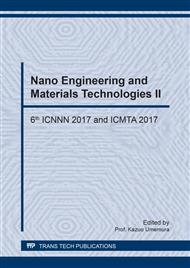p.153
p.161
p.166
p.170
p.179
p.184
p.190
p.195
p.200
The Influence of Sulfates on Tobermorite Formation in Lime-Ash Composite
Abstract:
Autoclaved aerated concrete is an ecological building material with suitable properties and long-time tradition. The research of secondary raw materials usage and technology optimization is needed in order to increase the efficiency and sustainability of its production. It is important to focus on development of mineralogical composition while studying the influence of input materials and the parameters of hydrothermal synthesis on the properties of final product. This is especially important in case of tobermorite formation as the bearer of strength in the structure. Main focus of this paper is applicability of fly ash (silica component) and admixture of energo-gypsum (sulfate component) in production of lime-ash composite in hydrothermal conditions. The research was focused on autoclaving of samples at temperature of 170°C in three various isothermal sustains. Final samples were analyzed by XRD and SEM in order to proof the influence of input materials. Results show that 5% admixture of energo-gypsum had positive influence on tobermorite formation.
Info:
Periodical:
Pages:
179-183
Citation:
Online since:
March 2018
Authors:
Price:
Сopyright:
© 2018 Trans Tech Publications Ltd. All Rights Reserved
Share:
Citation:


